The Treaty of Point Elliot was signed near present-day Everett in Western Washington in 1855. Eighty-two chiefs attend the treaty conference. Fifteen tribes sign over to the United States 10,000 square miles of their ancestral lands. Each of the tribes is to receive $150,000 in annuities to be delivered over a twenty year period.
The Point Elliot Treaty is signed by nine Snohomish chiefs. The Snohomish Reservation (later called the Tulalip Reservation) is intended for occupation by the Snohomish, the Skykomish, the Snoqualme, and the Stillaguamish.
Today the Hibulb Cultural Center and Natural History Preserve has the mission to revive, restore, protect, interpret, collect, and enhance the history, traditional cultural values and spiritual beliefs of the Tulalip Tribes who are the successors of the tribes which signed the Treaty of Point Elliott. Shown below are photographs of some of the displays in the cultural center.
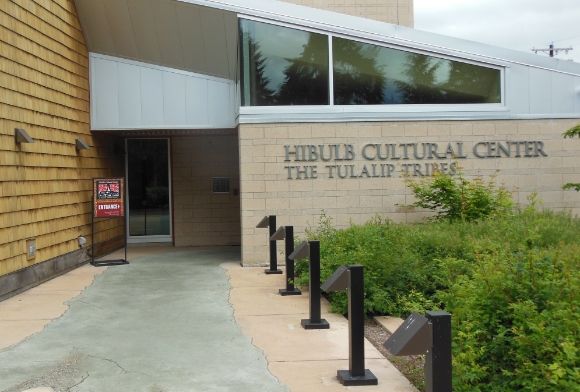
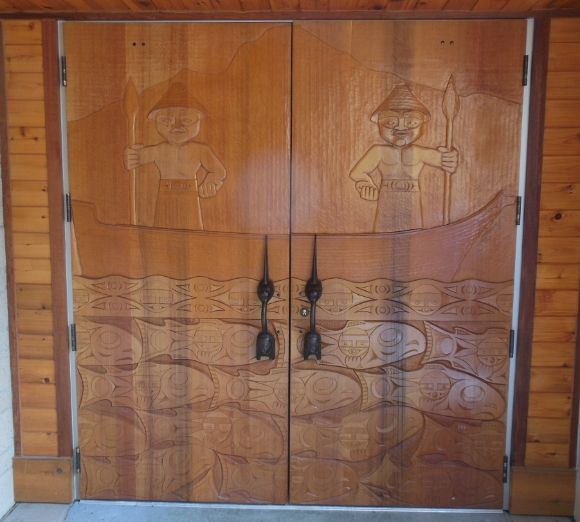
The Tulalip tribes–Snohomish, Snoqualmie, Skykomish, and others-have lived along the Salish Sea (Puget Sound) for thousands of years.
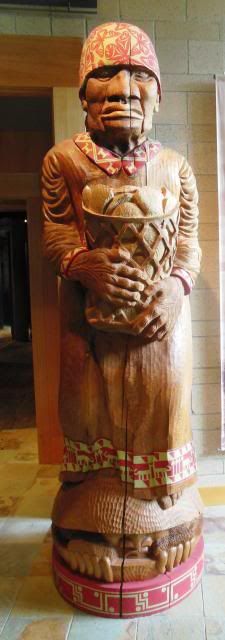
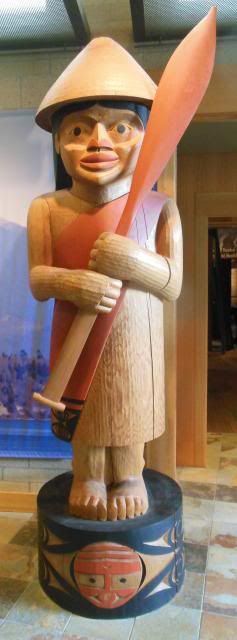
Two traditional Salish welcoming figures (shown above) greet visitors to the Cultural Center. The female figure shows an elder woman carrying a clam basket. The male figure is dressed in regalia holding a paddle, symbolizing the fact that that the Tulalip people are historically saltwater and river people.
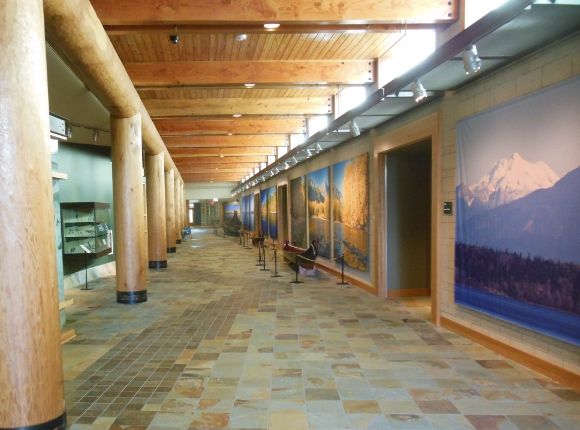

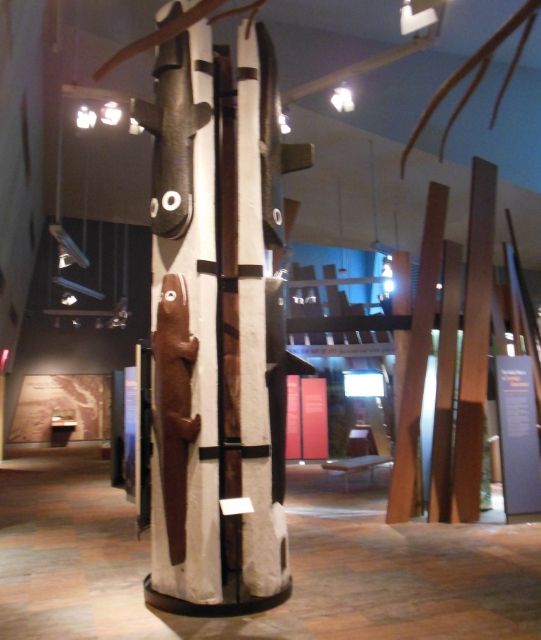


Cedar:
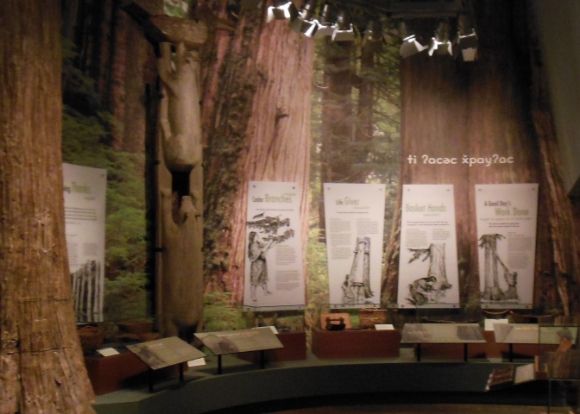
One of the displays shows the importance of cedar to the Tulalip tribes.
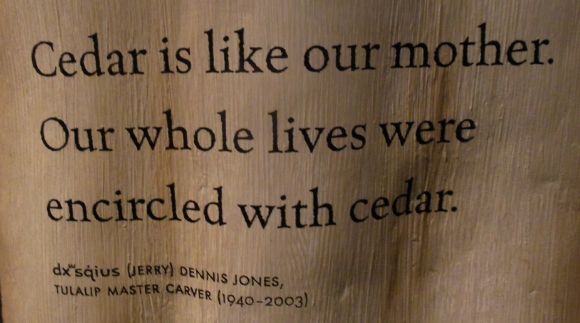
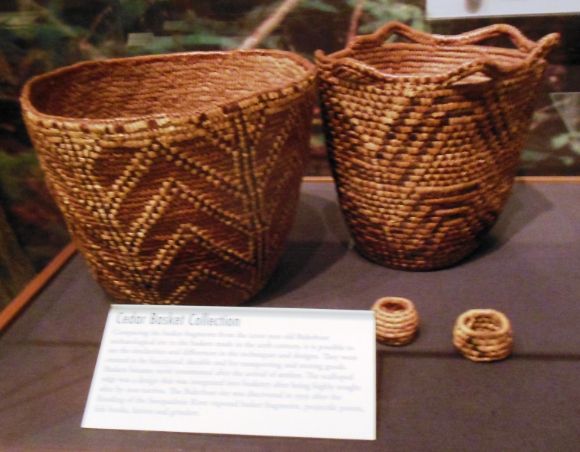
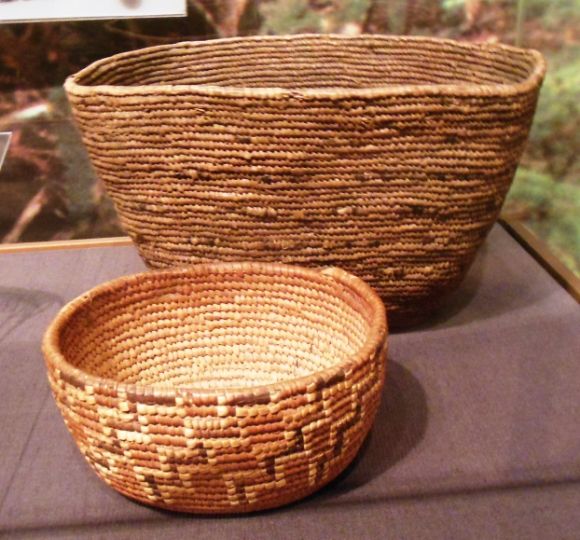
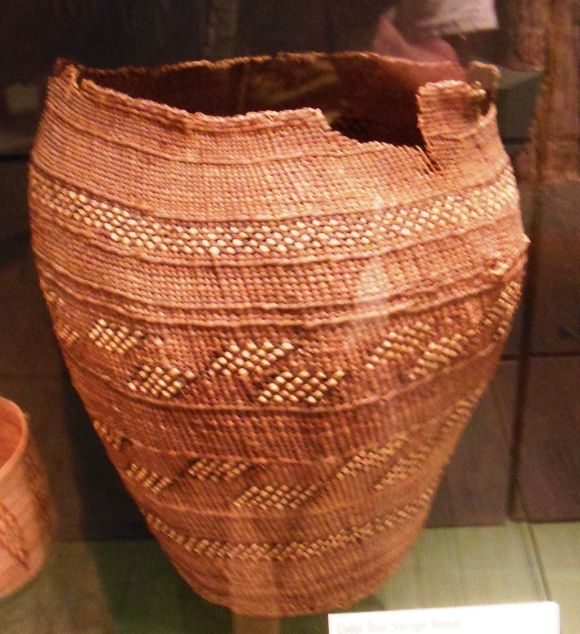
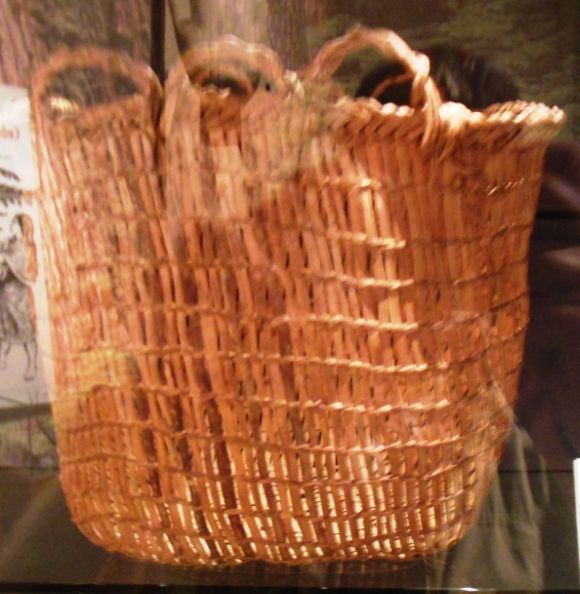
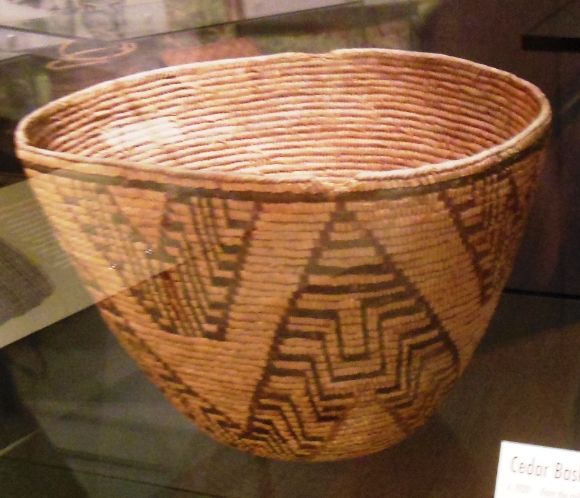
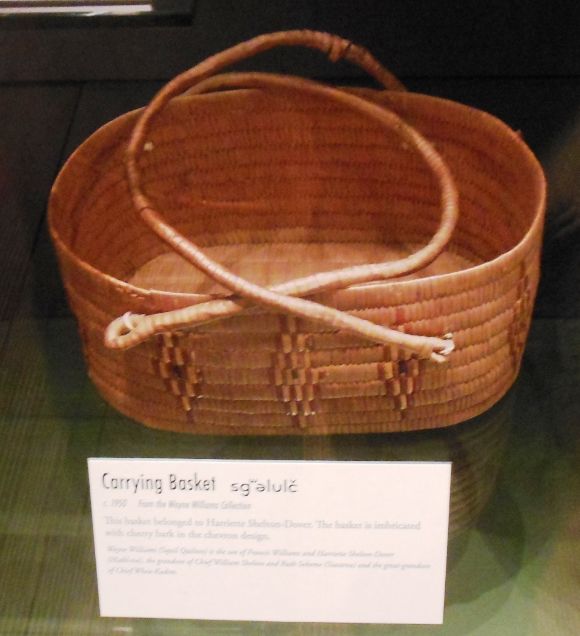
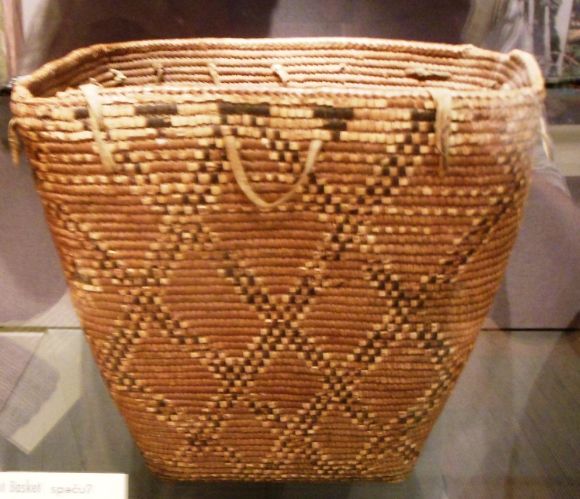
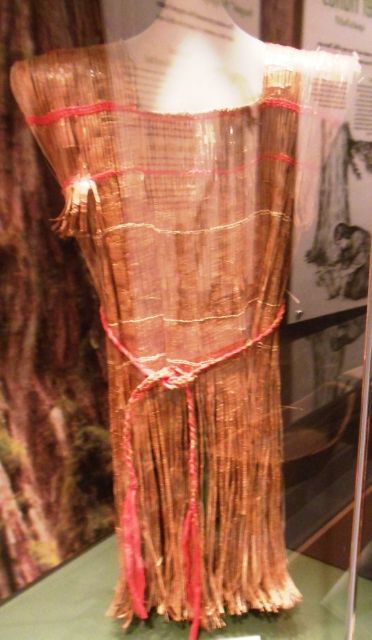
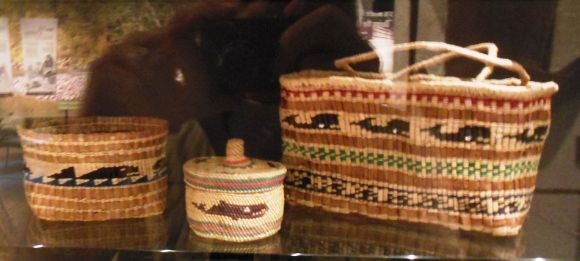
The three baskets shown above have two design motifs that make them distinctly Tulalip: the whale and the duck.
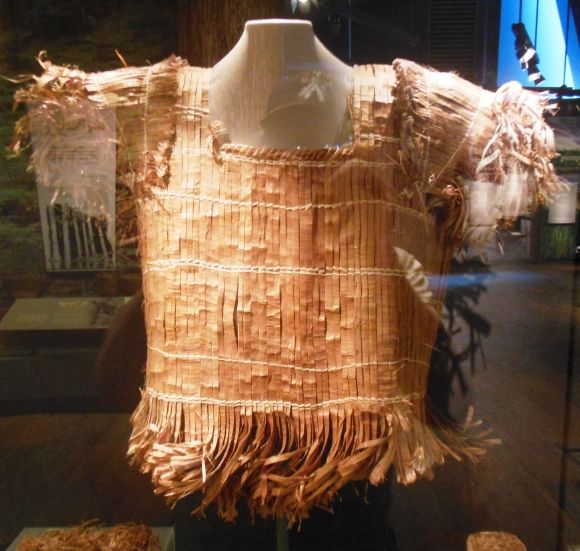
The Tulalip tribes made clothing, such as the shirt shown above, out of cedar. This type of clothing provided protection from the rain. Shredded cedar bark was woven into blankets, aprons, and hats as well as shirts. Cedar barks strips were pounded into soft, workable piece. Natural oils, such as bear fat, deer tallow, duckoil, and dogfish oil, would then be added to the shredded bark to make it softer. To make their clothing and blankets extra warm, the weavers used a variety of fur, such as the hair of an extinct breed of wooly dog and mountain sheep wool, which was woven into the garment.
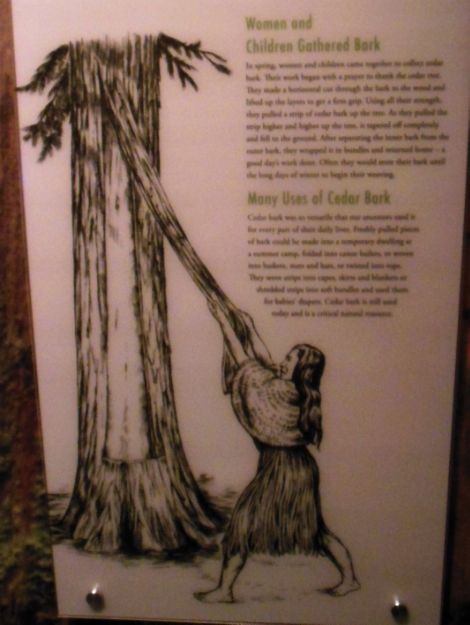
The drawing shown above shows how the bark was removed from the tree.
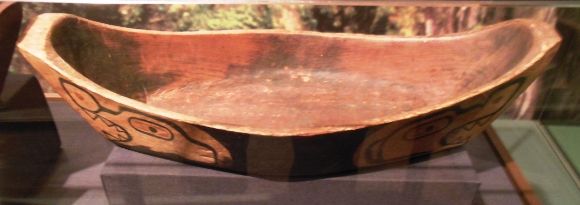
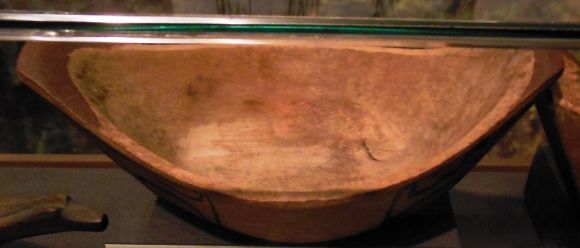
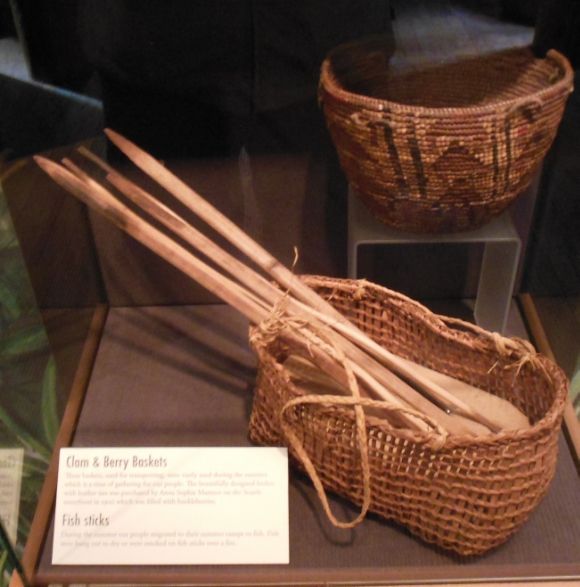
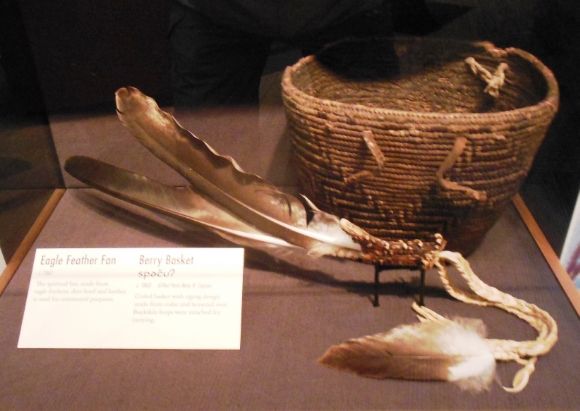
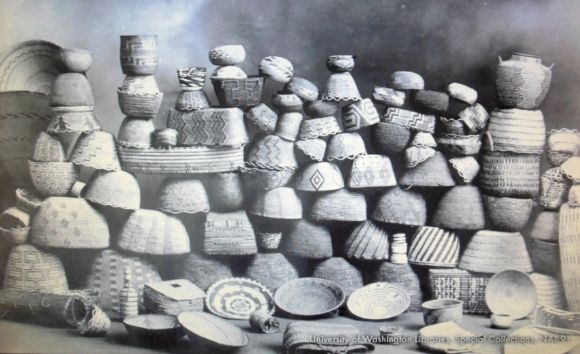
Fishing:
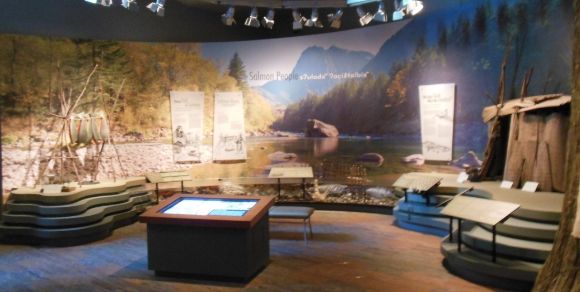
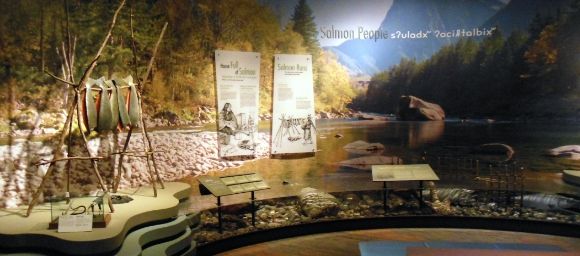
According to the display:
“We only too what we needed”
“Our ingenious ancestors crafted ideal fishing and hunting methods suited to the type of catch and environment.”
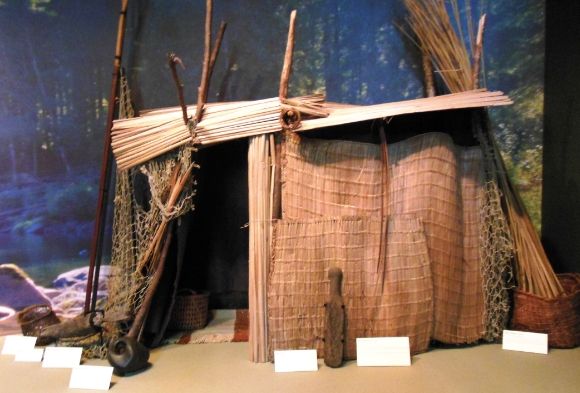
During the spring and summer, families would leave their winter longhouses and camp along the shorelines, rivers, islands, and creeks. During this time, they would often build mat houses such as the one shown above.
Salmon were harvested using weirs-fences made from small cedar, maple, or hemlock poles lashed together. The weir would be stretched either part way or all the way across the river. As the salmon swam upstream they would be forced to swim along the weir to the only opening which led into a fish trap. According to the display:
“Weirs were only as good as the leaders in charge of their construction. Our ancestors ensured a good catch by setting weirs according to the environment and the migratory patterns of the salmon.”
The display also indicated:
“Even though they could harvest a large quantity of salmon, history taught our ancestors the need to share the wealth and conserve for future harvests. They were careful to take only what they needed to allow the remaining salmon to swim to the spawning ground.”
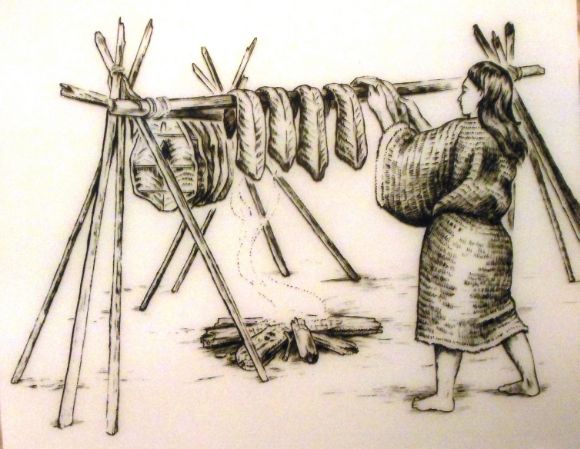
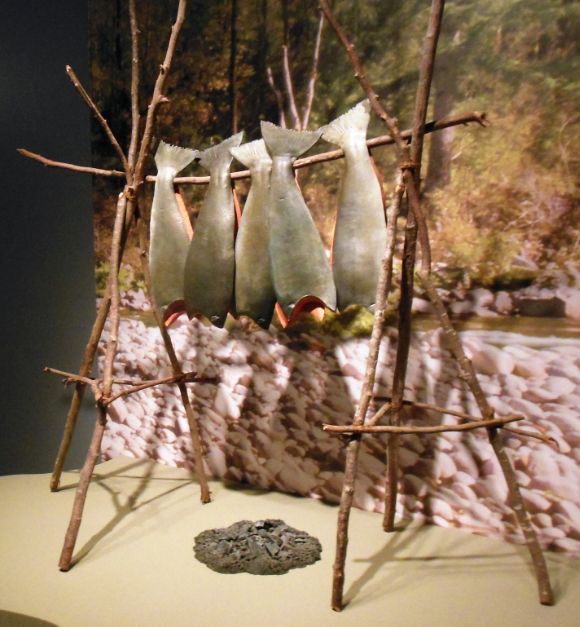
The harvested salmon would be preserved by air drying and smoking (shown above).
Foods would often be prepared by boiling and steaming. Watertight baskets would be filled with water, then hot rocks added to bring the water to a boil. Salmon, shellfish, and other meats would be prepared this way. Steamer clams and mussels would be cooked on hot rocks and covered with seaweed to trap the steam.
The Tulalip people gathered shellfish, speared fish, and caught ducks at night using torches which they would set on the beach or in the bow of the canoe.
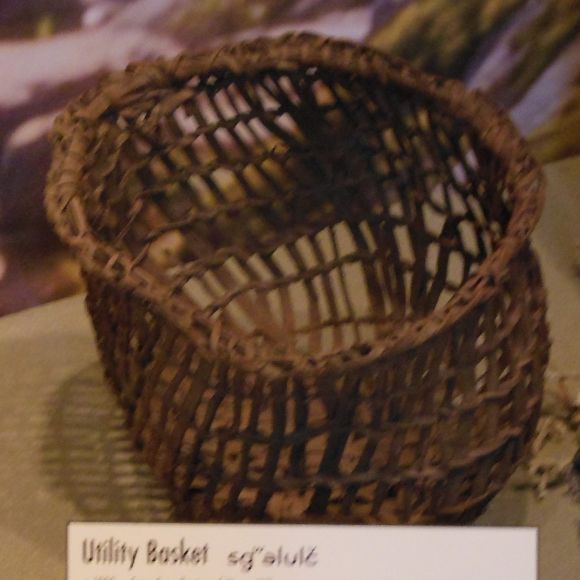
Shown above is an open basket which was used for gathering clams and small fish.
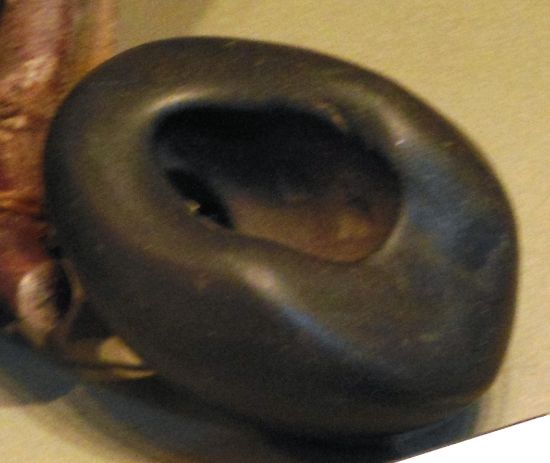
Shown above is a stone anchor.
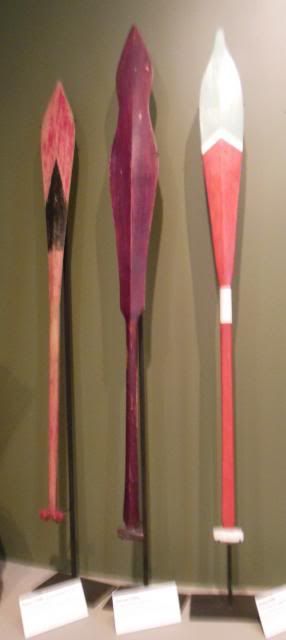
The paddle on the left (shown above) is a woman’s paddle; the center paddle is a steersman’s paddle; and the paddle on the right is a hunting paddle.
Stone Tools:
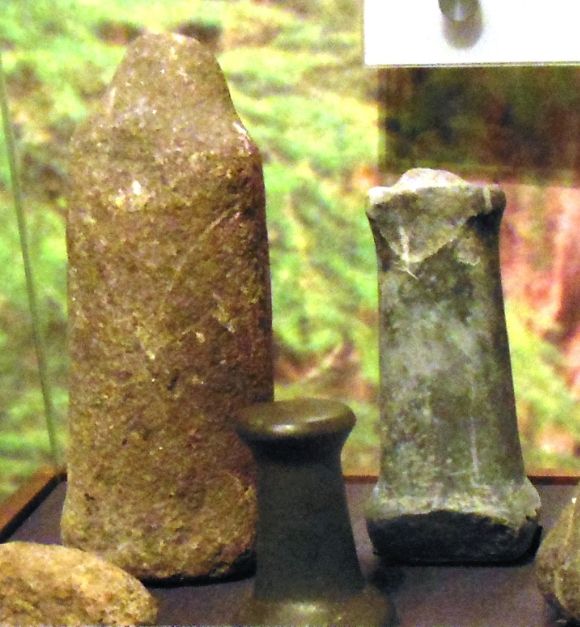
Shown above are some stone mauls.
Sacred items:
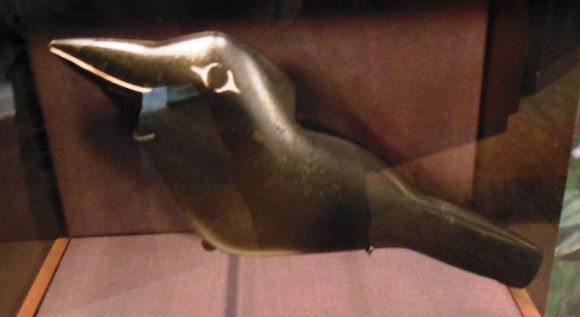
Shown above is a raven rattle.
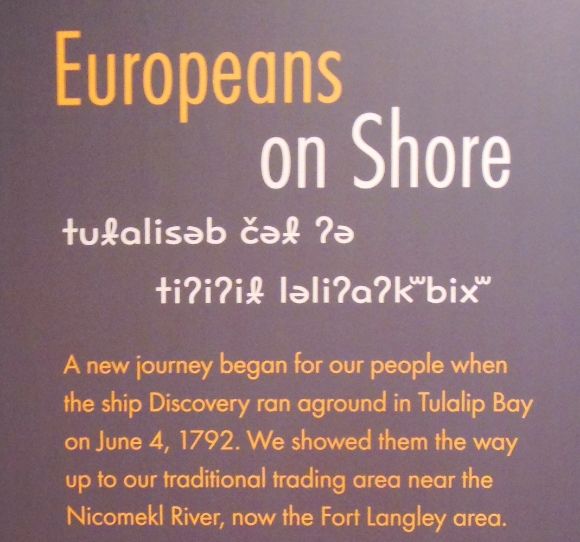
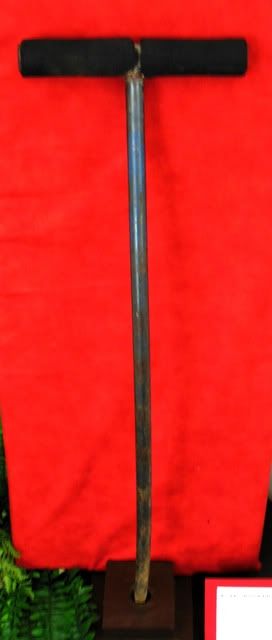
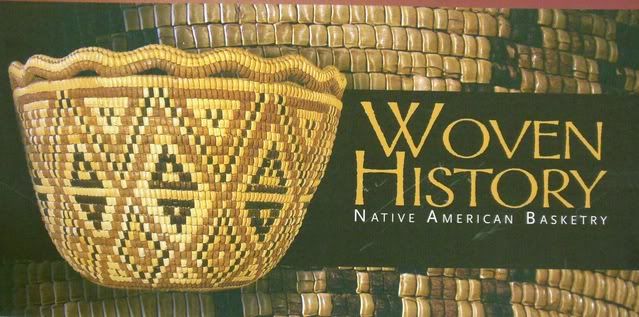
Leave a Reply